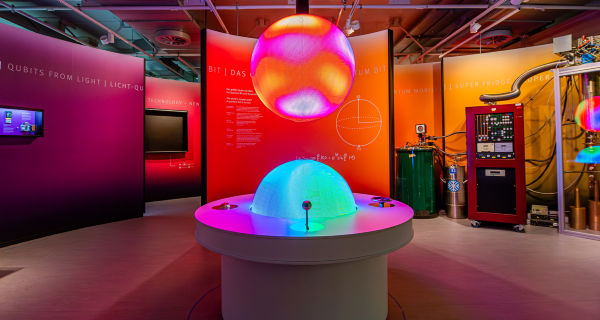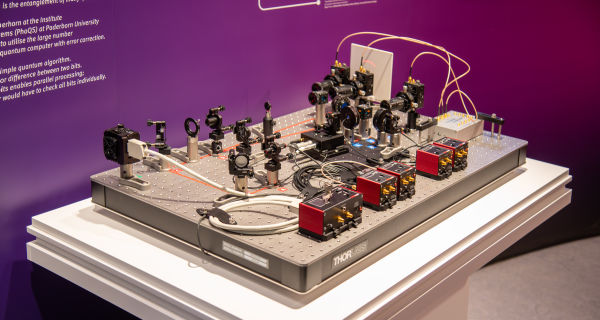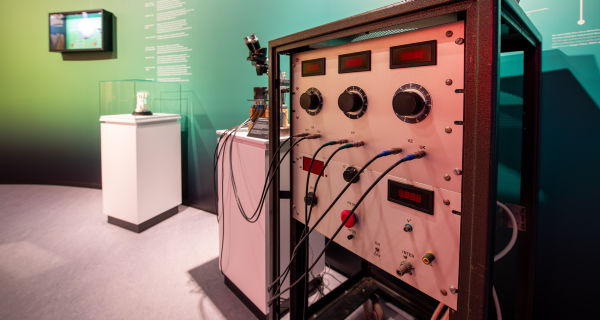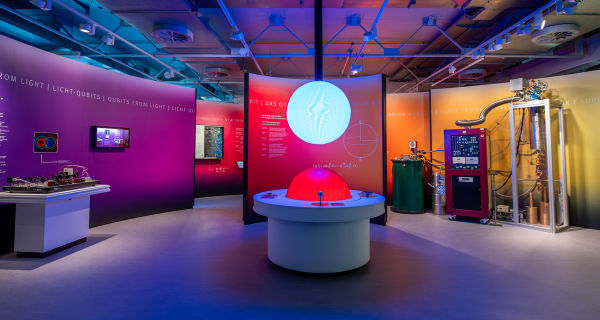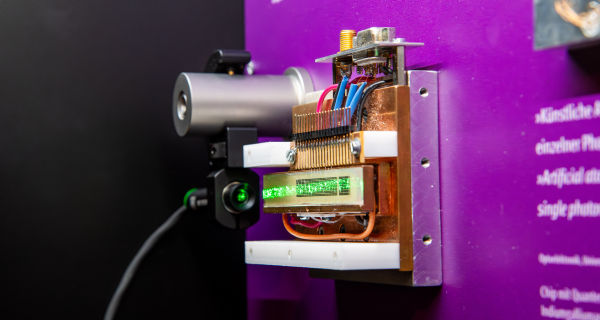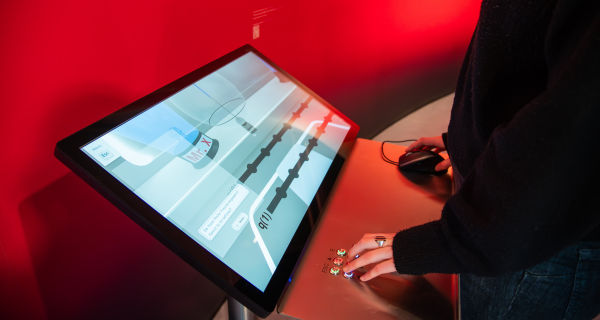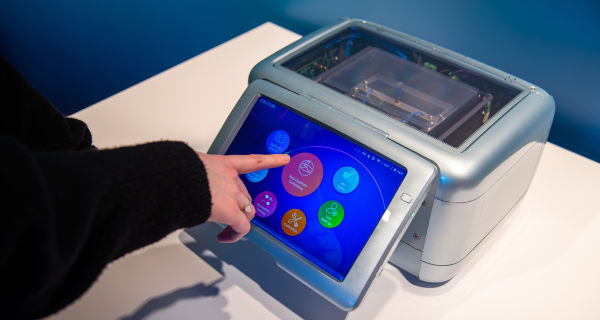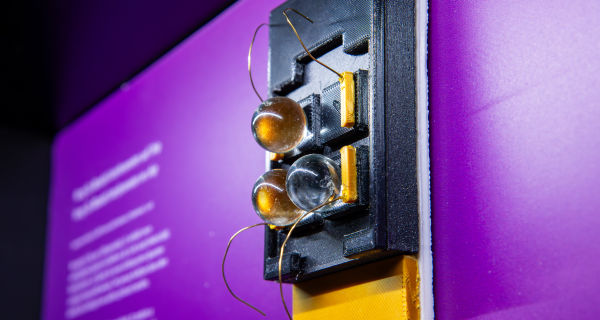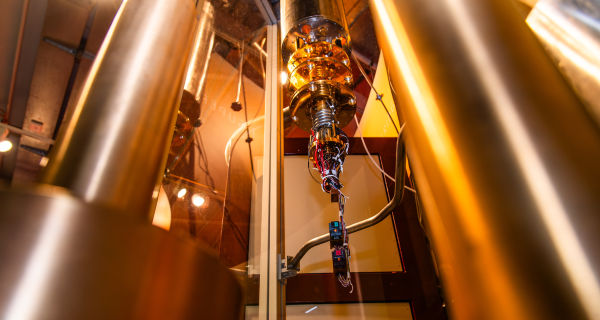With this new exhibition area, the HNF is the first museum in Germany to put quantum computing centre stage. Will quantum computers replace our familiar digital calculating machines as the new supercomputers? And are we witnessing the dawn of a new era?
Quantum computers can be used to solve problems that digital computers find difficult or cumbersome to solve. They represent a new technology that signals a break with the past and opens up completely new possibilities.
The world’s biggest quantum bit
The presentation focuses on a special object, "the world's biggest quantum bit", which visitors can use to try out the possibilities of the quantum world. By selecting the brightness and colour, principles of the quantum world such as superposition and entanglement can be illustrated in a way that is easy to understand.
Objects from important research institutions such as the Jülich Research Centre and the University of Paderborn are also on display. These include three highly specialised photonic quantum research objects from Paderborn University and the experimental set-up from a laboratory.
On display from Jülich is a cryostat reminiscent of a chandelier, which generates the necessary cold temperature of -273.13 degrees. A functioning quantum computer and an ion trap designed by Nobel Prize winner Wolfgang Paul also feature.
Media station and hidden object picture
A media station playfully conveys the principle of qubits by asking visitors to solve various programming tasks together with a cat, a zebra and a dog.
The way quantum computers work is illustrated very clearly using a detailed hidden object picture that shows the fast and effective search function of quantum-based computers.
